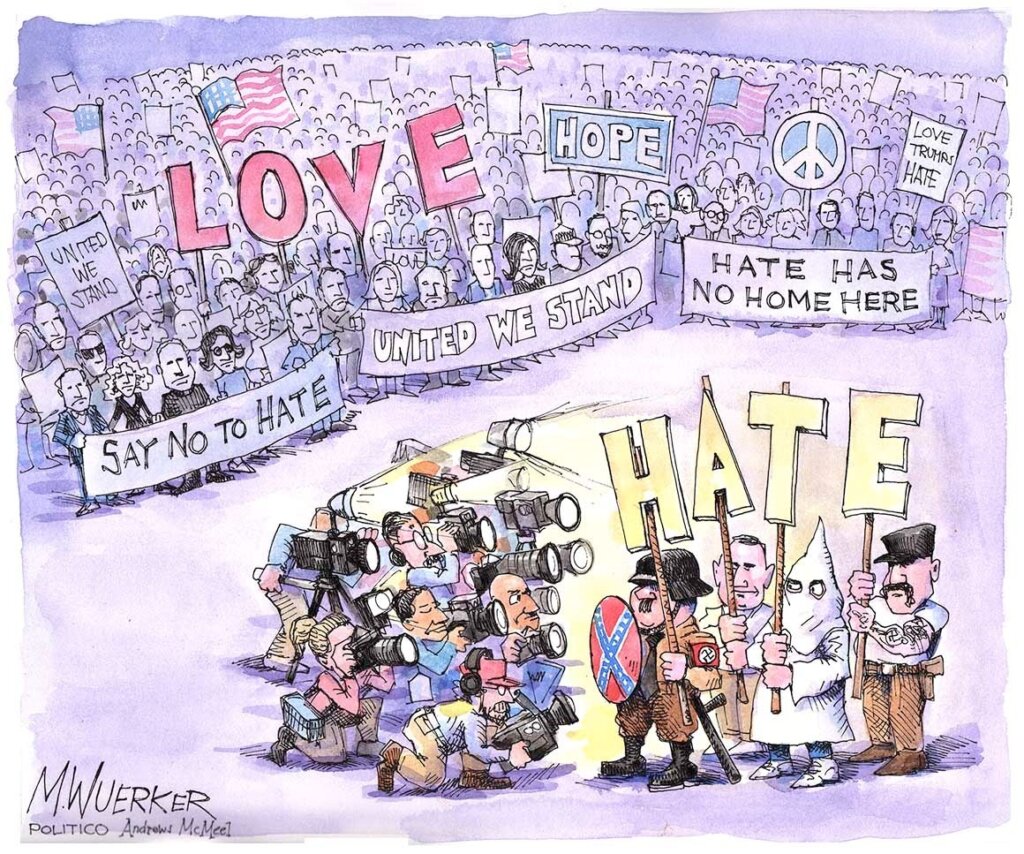Earlier this month Politico’s Matt Wuerker published a cartoon criticizing how the media covers hate groups. It shows a gaggle of TV reporters showcasing a tiny group of white supremacists while ignoring a sea of counter-protesters espousing tolerance and love.

It’s making a very valid point. But one that’s not entirely fair.
Yes, the media’s coverage of the recent Unite the Right rally in Washington D.C. — which on its surface was a relative failure — was disproportionate.
It gave too much of a platform to a small group of racist demonstrators.
But there’s a lesson to be learned from this. The D.C. rally might have only drawn two dozen demonstrators, but what that group represents is much bigger, and the “Hate” is much larger. Depicting it in four caricatures is terribly misleading.
Consider the evidence.
Hate crimes in the 10 largest U.S. cities were up in 2017; and while there was an official tally of 6,121 hate crimes reported the year before, the National Crime Victimization Survey estimates that hate crimes actually might be exponentially higher — as many as 250,000 a year.
We can’t be sure because there is no uniformity in how (and when) law enforcement agencies across the country should report hate crimes.
Another measure of certain levels of intolerance is in the spate of incidences depicting everyday acts of racism, whether it involves people of color being stopped for going to their gym, their public pool or neighbors’ home to canvass a political campaign.
Then there’s the dialogue we see online, in the comments section of online news stories and on social media. How much of it is trolling? And how much of it is racist impulse facilitated by the relative anonymity of the internet?
Meanwhile, The Daily Stormer, the white supremacist website, has been drawing four million visits on average per month.
Would we not be better served if the media covered with equal fervor the underlying and far more nuanced issues of race and intolerance in the U.S.? It’s not enough to focus on the extreme examples of racism but the institutional ones. It’s not enough to focus on extreme ideology but the seeds of racism and fearmongering that are drawing people in.

